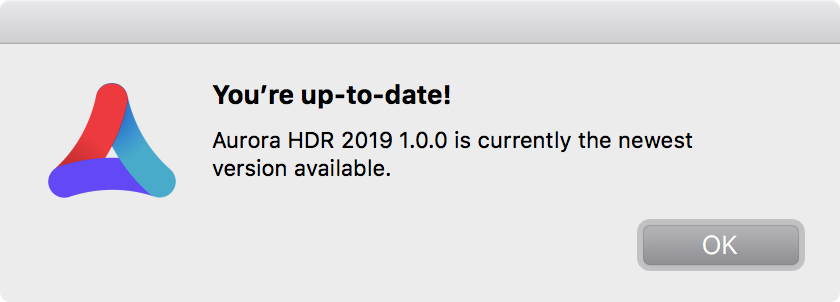

- #Aurora hdr 2019 renew trial how to
- #Aurora hdr 2019 renew trial manual
- #Aurora hdr 2019 renew trial pro

A 16-bit image, film image, whatever, is still either a bit over exposed or underexposed, no matter what its "dynamic" range potential, due to the nature of nature's incredible spread of light from bright sunlight to the deepest shadow, and we expose for light or dark NOT both ranges. You still expose one shot at a specific F-Stop. You can only get so much RANGER of exposure from a single image, BASED ON ONE EXPOSURE.

It is not the same thing as using a SINGLE 16 bit image for anything. However, you can remap tones and recompile the sum of two or more images into a format that does have a higher dynamic range. NO.you cannot do this with only ONE image - that is - taking say an 10-bit image to 12, 14 or 16 bits. It's like downgrading to 8 bits from say 12 bits, in reverse. This program ADDS two or more differently exposed images together and spreads the difference of two exposures (not high dynamic range) into a wider gamut AND a higher dynamic range. (BTW, I am in no way affilliated with the developer)Īctually, Mr. Fortunately, I found an outstanding tutorial online at that helped me get the most out of Photomatix Pro.
#Aurora hdr 2019 renew trial manual
I knocked the app down a half a star because the interface is kinda clunky and fugly (the dev should just copy Lightroom's interface), and because the user manual does not help at all to explain the basic concepts of tone-mapping, fusion merging and deghosting (it simply explains what each slider and adjustment does).
#Aurora hdr 2019 renew trial pro
Exposure merging is a bonus feature in Photomatix Pro that isn't included in most other HDR apps. I have not yet used any of the Exposure Fusion options (these are not HDR - they simply merge multiple exposures, which is useful for night photography, for example). I plan to create a few of my own presets as there aren't that many built-in presets that provide a natural or realistic looking result. My approach is to find a preset that provides a reasonable result and tweak the settings from there. I have used both the Contrast Optimizer and Detail Enhancer tone-mapping methods with good results. The raw file conversion in Photomatix Pro is okay, but even the dev admits it is not as good as Lightroom/ACR or other high-end raw converters.
#Aurora hdr 2019 renew trial how to
I export images from Lightroom using the plugin supplied with Photomatix Pro (if you use ProPhoto RGB in Lightroom, check the dev's website for instructions as to how to preserve this colour profile on export). The selective deghosting feature in Photomatix Pro also works very well, better than any automatic deghosting methods that I tried. Photomatix Pro did as well as Photoshop CC (which is supposedly the best at aligning images), and better than other HDR apps, including one that makes a big deal about its ability to align handheld images. I mostly shoot sequences of 3 and 5 images handheld, so auto alignment is a critical feature. It produced the best results, offers the most features and was the easiest to use (after some learning time). I tried several HDR apps (and the Merge to HDR Pro feature in Photoshop CC) before deciding to buy Photomatix Pro.


 0 kommentar(er)
0 kommentar(er)
